The seat on your ATV will take a beating over time. With the constant pressure of the rider, rain, sun, and other elements, your seat will wear out, fade, crack, and tear eventually. Luckily, it’s not to difficult to repair or reupholster at ATV seat.
But first you have to decide, do you want to reupholster the seat altogether or find a quick fix that won’t cost you much time or money. This is up to you, but for things like a small tear, I find it easier and cheaper to just stitch it up and put a nice seat cover over it. If your seat is just falling apart with big tears, cracking, fading, or could use some new padding, I would go with reupholstering.
This quick method will work in a pinch and I usually do this for small tears and splits in the seat fabric. But this method will also work for more beat up seats if you don’t want to spend the time or money reupholstering.
You simply stitch up the tear and get a decent seat cover to put over the seat. If you get a good seat cover, you won’t even be able to tell the seat ever had a tear in it. I usually use strong dental floss to stitch the seat with. I know it sounds weird, but any strong thread will work just fine.
Some people, instead of stitching the tear, will actually just put some duck tape over the damaged area. It works just fine for the most part, and since you’re covering it up anyways, why not.
You can find some pretty cheap ATV Seat Covers on Amazon to cover your stitch job. There are universal options out there that work great. But for the best fit, look for a replacement for your specific make and model. Keep in mind, an exact replacement will cost more than a universal seat cover.
If your ATV seat is just to far gone for a quick easy fix, your only other option might be to just reupholster the whole seat. It usually costs more time and money than a stitch and cover, but it’s really not too bad and can get your seat back to looking brand new.
I’ve done this a few times myself for quads and motorcycle seats and you only need a few common tools to get the job done. Here’s a list of the tools required, this might vary a bit depending on what’s needed to remove your seat from the machine:
To start, remove the seat from your ATV. You will either use a screw driver or socket wrench to remove the bolts holding the seat to the quad. On some machine you won’t need either because there is a latch at the back of the seat you can pull to pop the seat off.
If you flip the seat over, you will notice staples holding the upholstery to the seat frame.The seat frame is usually a plastic piece holding the foam or seat cushioning. Remove these staples with a pair of pliers. I’ve noticed needle nose pliers work best for gripping the staples.
This step is optional, it’s up to you if you want to remove the seat cushioning material and replace it or not. If just the seat was damaged but your seat was still comfortable, you may not need to do this step.
Cut away the seat foam from the plastic seat frame with a knife or cutting blade. A sheet-rock razor blade works good for this step. The foam will most likely be glued to the plastic frame, so this part can be a bit of a pain.
This step is only required if you did step 3. Cut a new piece of foam or seat cushion for your seat. I find it easiest to place the seat frame on the foam and trace where you will cut with a marker or pencil.
Here is Standard Piece Of Seat Foam found on Amazon to give you an idea. You may need to cut its shape to match your old seat foam.
This step is only needed if you’ve done steps 3 and 4. Glue the seat foam back onto the plastic seat frame. I’ve found cement glue or contact cement works good for this step.
Measure and cut the new piece of seat fabric you are using to reupholster the seat with. Again, I use the seat frame with the foam on it to trace the fabric before I cut it. Or you could use the old piece of seat fabric to trace with for an exact match.
Keep in mind, the fabric needs to wrap around to the underside of the seat frame to be stapled back down.
Here’s a link to a good piece of Wear-Resistant Seat Cover Leather to give you an idea of what you want for a seat fabric.
Wrap the new seat cover around the seat and foam and staple the fabric to the plastic seat frame, like it was originally. This part can be tough to get the staples to hold. I found it best to use a high powered staple gun like one run by an air compressor to avoid problems.
I’ve done it with a standard spring driven staple gun before and it worked just fine, eventually. I spent a lot of time messing with the staples that wouldn’t make it all the way into the plastic seat frame though.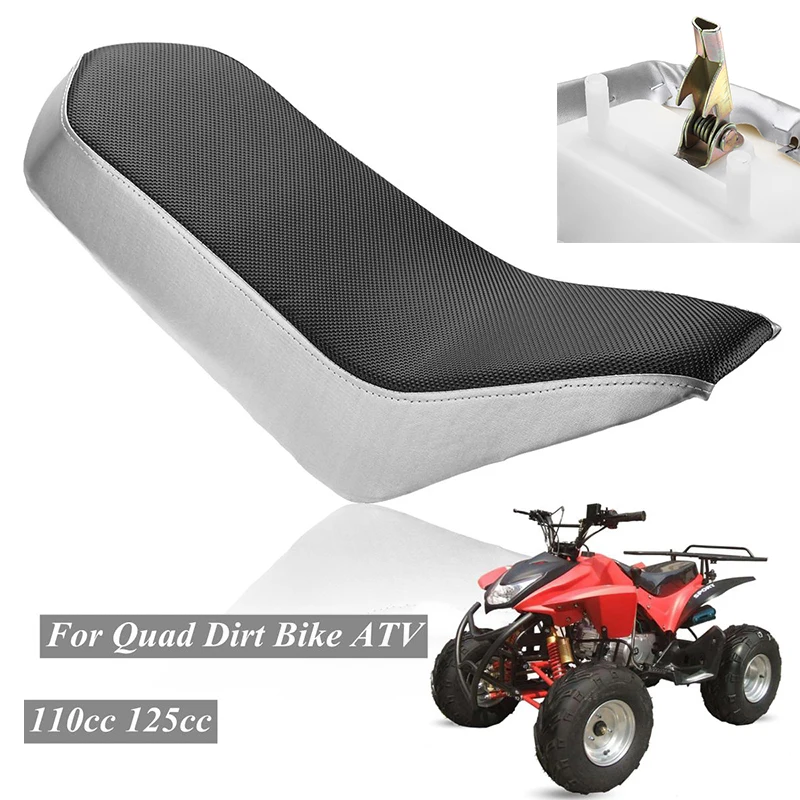 The air powered staple gun works like a charm.
The air powered staple gun works like a charm.
Now that you’ve reupholstered your seat or did a quick stitch and cover fix, how do you keep your seat protected? You don’t want to be reupholstering the seat over and over and the seat will wear out again over time.
One popular option is to get a seat protector or seat cover that is easily changed out. The seat protectors even add extra cushion for a more comfortable ride. Here is a good option I found for you on Amazon, the MadDog GearComfort Ride Seat Protector.
This will also help cover up existing rips and tears if you decide not to reupholster or stitch and cover. I recommend fixing the seat either way, but this can work if you just don’t care all that much about fixing your ATV seat.
There are a few options when it comes to ATV seat repair, from quick fixes, to reupholstering, to cover up jobs. Choose the option that works best for you. Reupholstering can get your quads seat looking brand new again.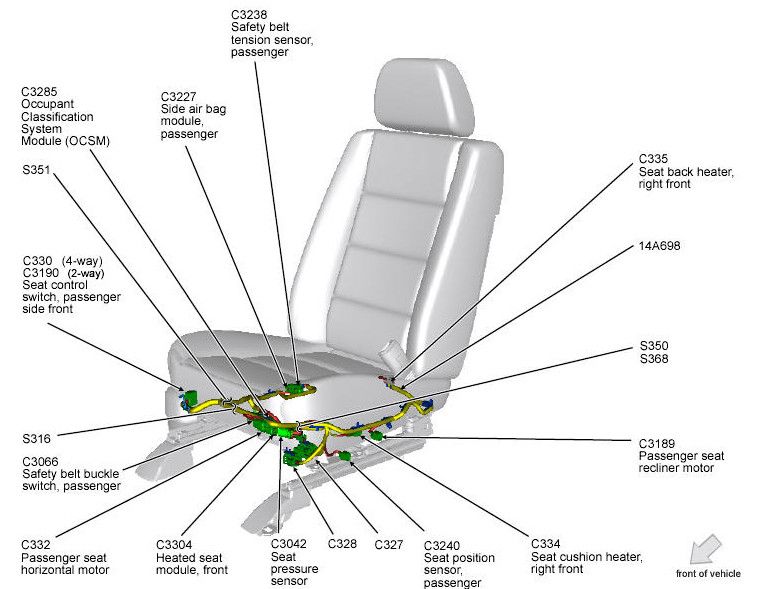 But A cover job or a quick stitch and fix will be cheap and less time consuming.
But A cover job or a quick stitch and fix will be cheap and less time consuming.
Either way, it’s a good idea to get a seat protector if you’re someone who likes to keep their machine looking new. To check out some other gear I’ve tried and tested for you, visit the Recommended Gear Section of this site.
Sharing is caring!
It's going to happen sometime. Whether it comes from the elements or damage of some kind, your ATV seat is going to fade, tear, or crack. This isn't just an aesthetic issue either. Exposed padding is vulnerable to water damage, and holey cushions can be very uncomfortable and even distracting to sit on. But you can be prepared because this post will tell you both how to repair an ATV seat and how to protect it from future (or any) damage.
If the damage is very small, small enough to not need to be stitched together to stay closed, you can just dab something waterproof on it to smooth it over and keep water from damaging the padding.
This could be super glue, Liquid Vinyl, indoor/outdoor sealant, or something similar. Whatever acts as a waterproof adhesive or sealant.
You can purchase an ATV seat patch kit or make your own patch with vinyl fabric and VLP.
The purchased patch kit is simpler than making your own patch, but either option with improve the appearance of the seat and restore its waterproofing to protect the padding.
Both of these options are inexpensive.
To repair an ATV seat with larger tears, particularly ones that expose padding or create an uncomfortable ridge in the seat, you can stitch the vinyl closed with extra durable thread or dental floss, or cover it with duct tape, and slap an ATV seat cover on it to make it look new and protect it from water damage. Seat covers range from prices in the teens to over $100.
ATV are the core piece of riding gear for off-road riders
Find out the best look for you
Image from www. theupholsteryforum.com
theupholsteryforum.com
Sometimes you don't have just a tear; some of your cushion is actually gone. This is when you need to reupholster the seat. Although you could reupholster it to do any repair, if that's what you prefer. You might want to do this before selling the ATV if you're expecting to make a bundle on it.
Depending on what you need to remove, you'll need:
a screwdriver/socket set
needle nose pliers
a staple gun
a pencil or marker
a knife or blade
cement glue
replacement cushion foam
replacement seat material
Tip: Working in a warm environment or warming the vinyl with a hair dryer will make the vinyl easier to pull over and mold to the shape of the cushion without wrinkles. Some people put their vinyl in the dryer for a few minutes, but this is not recommended.
Image from Maxam Home Repair YouTube channel
You'll have to remove the seat.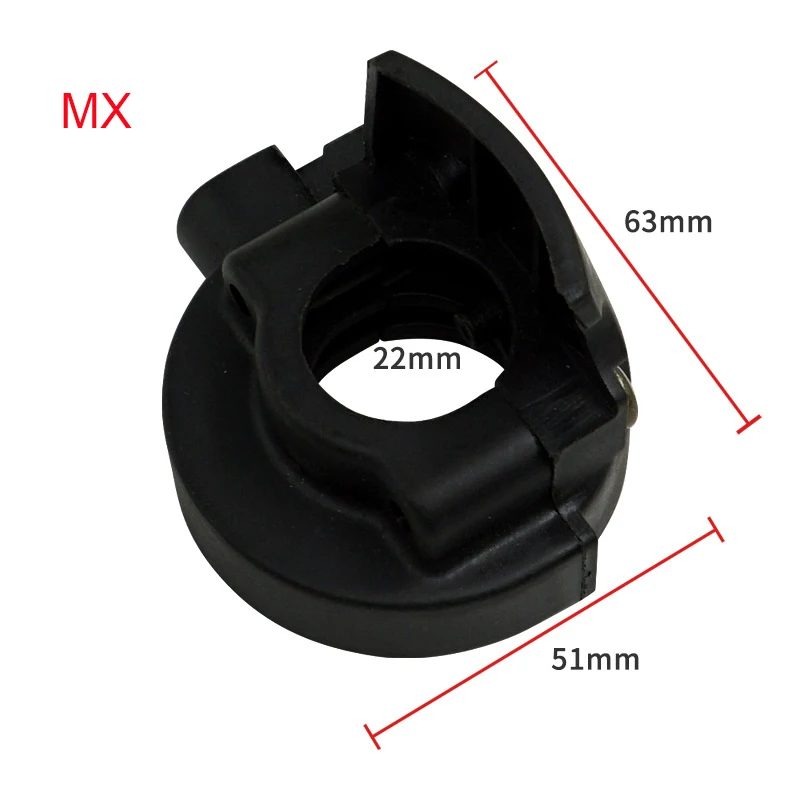 You can use the screwdriver or socket wrench to unbolt it. Unless you're one of the lucky ones with a model that only requires you to trip a latch on the back of the seat to remove it.
You can use the screwdriver or socket wrench to unbolt it. Unless you're one of the lucky ones with a model that only requires you to trip a latch on the back of the seat to remove it.
When you flip the seat over, you'll see the fabric is stapled to the frame. You can remove these with the needle nose pliers, or anything sturdy and flat enough. Yes, it's tedious, but not too bad.
Cut the existing foam from the frame. This is the real pain in reupholstering because the foam is probably still glued to the frame. If you don't need to replace the entire cushion, you can always cut just part that's damaged. Cutting the damaged part to make it a defined shape like a square or rectangle could make it easier to shape the replacement foam to make a patch.
For entire seat replacements or patches that go all the way to the bottom, you'll have to cut the foam or seat cushion to fit the frame. You can trace the shape of the frame on the foam with your pencil or marker.
You'll need to glue the foam to the seat frame with the cement glue
You can add batting as extra cushion at this stage if you want to. Cut it, attach it with spray adhesive, and cut away any excess.
Cut it, attach it with spray adhesive, and cut away any excess.
Cut the replacement fabric to cover all of the seat and staple it to the underside of the frame. You may find it easier to cut the replacement fabric if you do it before you've taken the original seat apart. You could wrap the new fabric over the seat and use it as a guide. Cut the piece larger than you need to allow for errors, particularly if you'll be adding batting.
Once the fabric is in place and stapled, you're done. You can reattach the seat, and you're ready to ride!
To keep your seat from needing a repair, you can purchase an ATV seat protector to cover the seat and add extra padding for comfort. With this protector, the seat won't be exposed to the elements, and it'll be next to impossible for anything to damage it. They're really inexpensive, and it's easy to install and remove with straps with buckles.
#CATALOG_ITEM_2#
Ripping a motorcycle seat is easier than you think. Sometimes tears appear due to wear of the material, in which case the constriction is just around the corner and repair will only be a temporary solution. The top reasons why the integrity of the seat cover is violated are:
Sometimes tears appear due to wear of the material, in which case the constriction is just around the corner and repair will only be a temporary solution. The top reasons why the integrity of the seat cover is violated are:
- Well, tore and tore, - someone will say.
The fact is that if the integrity of the cover is not restored, the gap will increase. And then the stages of destruction of the seat will follow:
At the end of the process, you can simply lose the seat, although there was a chance to get off with a little blood.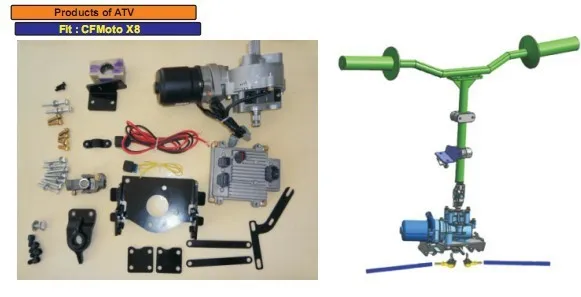
First of all, not paying attention to this is the first offense, the consequences of which have already been described above.
Secondly, seal the gap with an ordinary adhesive or compound that does not have elasticity. nine0003
The fact is that the seat is constantly deformed. We sit on it, fidget on it, get up .. all this affects the tension of the cover. The material on the seats has an elastic gap. The cover stretches, otherwise, it would burst like an overvoltage balloon.
If you use regular instant glue or super duper glue, which is aimed at holding static objects, such as gluing a broken vase or a wooden shelf together, then it will not hold any patch on the seat. Guess why? Such glue will crack over time or fall off quite quickly, because it is not designed for frequent deformation. nine0003
Thirdly, it is somewhat useless to sew without waterproofing the seam. All motorcycle seats are necessarily processed along the seam from the inside (I don’t know individuals who would glue from the outside).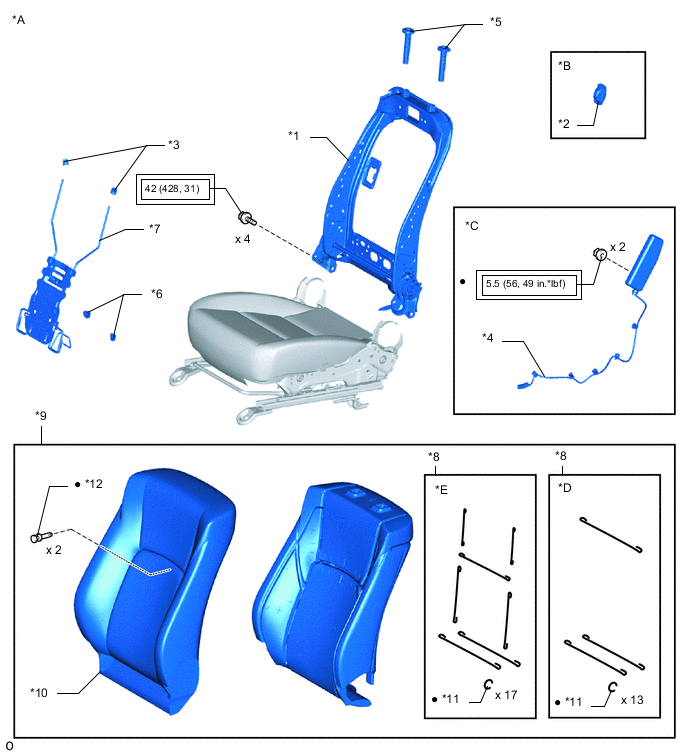 This is done for the same reason that you were scared above. If water seeps through the seams into the seat, the process of rotting will begin and a mold farm will open.
This is done for the same reason that you were scared above. If water seeps through the seams into the seat, the process of rotting will begin and a mold farm will open.
If you are closer to the "cut and sew" method of the course, and the gap is of modest size, then you should sew up with especially strong threads and very frequent stitches. The seam should still be processed so that moisture does not get through it. Choose moisture resistant glue or something close to it. But the sewing method has another obvious disadvantage: the stitches, when the surface is deformed, will begin to spoil the edges of the previous gap, especially since the holes made by the needles on their own are not as good as machine processing. nine0003
Patch is the most common way to repair a seat. The main mistake is that the patch is placed on top of the gap, where it does not always fulfill its purpose. It is most correct to put the patch from the inside first. To do this, take a piece of leatherette, which is larger in size than the gap. The material is inserted through the hole, straightened there, glued to the cover.
To do this, take a piece of leatherette, which is larger in size than the gap. The material is inserted through the hole, straightened there, glued to the cover.
Back to the issue of glue. Shoe or professional leather glue is the best choice because it has an elastic gap that will tolerate deformation of the surface of the case. And then, it’s not for nothing that engineers developed so many variants of glue with certain characteristics. nine0003
The patch material is selected from leatherette, such as vinyl leatherette, polyester leather or bielastic. It is not recommended to take genuine leather for seat covers, because it is much more capricious. Its porous structure is too subject to the influence of the external environment.
After patching from the inside, the outer patch is glued, which is completely glued. In this way, the place of the break is strengthened twice and the deformation of the cover will not affect the edges too much.
If the damage to the seat is too great, the seat is usually reupholstered. Many take furniture foam rubber, but it does not fit. Now is the time when it is easy to find the right density foam rubber for the seats of cars and motorcycles on the market. Therefore, if you plan to repair the seat yourself, it is wiser to look for high-density foam rubber.
Many take furniture foam rubber, but it does not fit. Now is the time when it is easy to find the right density foam rubber for the seats of cars and motorcycles on the market. Therefore, if you plan to repair the seat yourself, it is wiser to look for high-density foam rubber.
At the beginning of the next season, the main thing is to properly re-mothball your favorite all-terrain vehicle that has stood for several months. To do this, you need to carefully check the status of all nodes and systems. nine0003
We'll tell you exactly how to prepare an ATV for the season.

Next, we'll tell you exactly what to do.
The plastic elements of the body may have cracked in the previous season, and this may not have been noticed before conservation. The leather or leatherette of the seat could also crack, and the filler could come out from under the cover. It is better to fix such defects immediately (lay the filler inside, sew the seams apart or apply a patch) - otherwise the holes will increase, and the upholstery will have to be completely tightened. nine0003
The seat and body are inspected after washing the ATV, so that all surfaces are clean
Engine oil : if the ATV has not been changed before winter and the ATV “wintered” with the old one, it is better to replace it with a fresh one, especially if it has served more than 1000 km in difficult conditions. If the oil was changed before conservation, you need to check its level: is it gone.
If the oil was changed before conservation, you need to check its level: is it gone.
Grease : Inject through all injection points. Usually they are on movable hardpoints. But it is better to look at their exact location in the instructions for the ATV. nine0003
Antifreeze : we measure the level in the expansion tank (usually it is visible under the front left wing) - if it has fallen below the minimum mark. You need to check it only on a cold engine (before starting it, or 10-15 minutes after stopping).
Brake fluid : check the level - if it has fallen below the minimum mark. Usually ATVs have two brake fluid circuits: for the front brakes and a common one. The container for the front circuit is located directly on the handlebar, next to the brake lever. The "common" reservoir is usually mounted under the rear left fender. nine0003
Spark plugs : we take it out of the engine (to do this, remove the engine compartment shield) and inspect. If there is soot or plaque, they are replaced. In general, spark plugs are rarely changed, approximately every 6000 km. If this mark is very far away, they can not be checked, since access to them is usually very inconvenient.
If there is soot or plaque, they are replaced. In general, spark plugs are rarely changed, approximately every 6000 km. If this mark is very far away, they can not be checked, since access to them is usually very inconvenient.
Air filter : inspect, if clean, leave. It is usually located under the seat, covered with a lid.
Oil filter : if the oil changes, the filter also changes. It is located on the left side, under the protective cover.
Fuel filter : inspect after checking the gas tank. To get to it, you need to remove the left side of the lining and the left engine compartment cover. If the tank is clean or has been filled to the top, the filter will likely remain clean. In this case, it can be returned to its place. If it has not been changed for a long time, the tank has not been filled with gasoline or there are traces of corrosion on the walls of the tank, the filter must be replaced. nine0003
Drain the old gasoline and fill it with fresh one.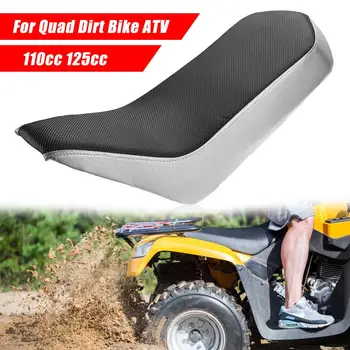 If, before conservation, gasoline was filled not under the neck or was not filled at all, and the tank was empty all winter, it must be examined with a flashlight: is it clean inside? If there are signs of corrosion on the walls, and flakes of sludge or any other dirt are visible at the bottom of the gas tank, the fuel system will have to be flushed.
If, before conservation, gasoline was filled not under the neck or was not filled at all, and the tank was empty all winter, it must be examined with a flashlight: is it clean inside? If there are signs of corrosion on the walls, and flakes of sludge or any other dirt are visible at the bottom of the gas tank, the fuel system will have to be flushed.
For flushing, you need to completely drain the “wintered” gasoline, fill in fresh fuel to the edges of the gas tank and start the engine so that it disperses along the entire highway. After that, remove the cap from the tank, add gasoline if necessary. Then we also drain this fuel and again inspect the walls of the gas tank again. If rust remains, most likely the tank will have to be removed and washed more thoroughly. nine0003
Check charge and recharge if necessary. You also need to inspect the terminals, cable lugs and the battery case itself - if there is any plaque on them. If there is, we clean it with a sponge with a solution of water and baking soda.
The ATV battery is located under the seat
Engine : check if there are any oil leaks.
Drive : belt - check for integrity, chain - for rust. We also check the tension and tighten if necessary. nine0003
Radiator : Remove the grille and blow it out with a vacuum cleaner or compressor. If it is heavily soiled (for example, fluff, leaves, dirt) after the previous season, wash it under pressure.
Wheels :
Suspension, ATV stands on a flat surface without slopes : alternately press on the ATV from the top front and rear, and then over each wheel separately - check if there is any play, if the shock absorbers work normally. When pressing on either side, this part should rise and fall evenly without swaying.
When pressing on either side, this part should rise and fall evenly without swaying.
Suspension arms must be intact: no corrosion, dents, bends, cracks, holes
Suspension, ATV raised by jack or lift0110:
If something was removed from the ATV before conservation (for example, the battery, protection of the levers and the bottom), we install everything back.
When the external inspection of all parts is over, the parts are installed in their places, all technical fluids and consumables are replaced - you can finally start the ATV.
For the first time after winter, this must be done with particular care. The sequence is:
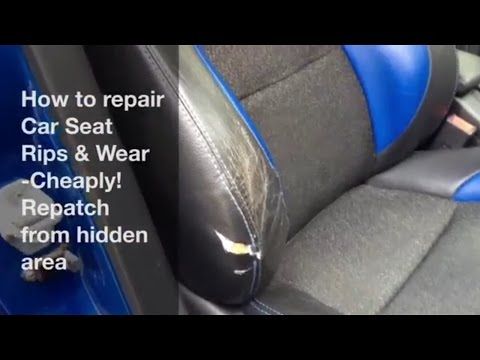 We also look at the exhaust: it should be almost transparent and not smell like burning. Each of the deviations (unstable idling, opaque exhaust) can have several causes and solutions, so we will not list here.
We also look at the exhaust: it should be almost transparent and not smell like burning. Each of the deviations (unstable idling, opaque exhaust) can have several causes and solutions, so we will not list here.